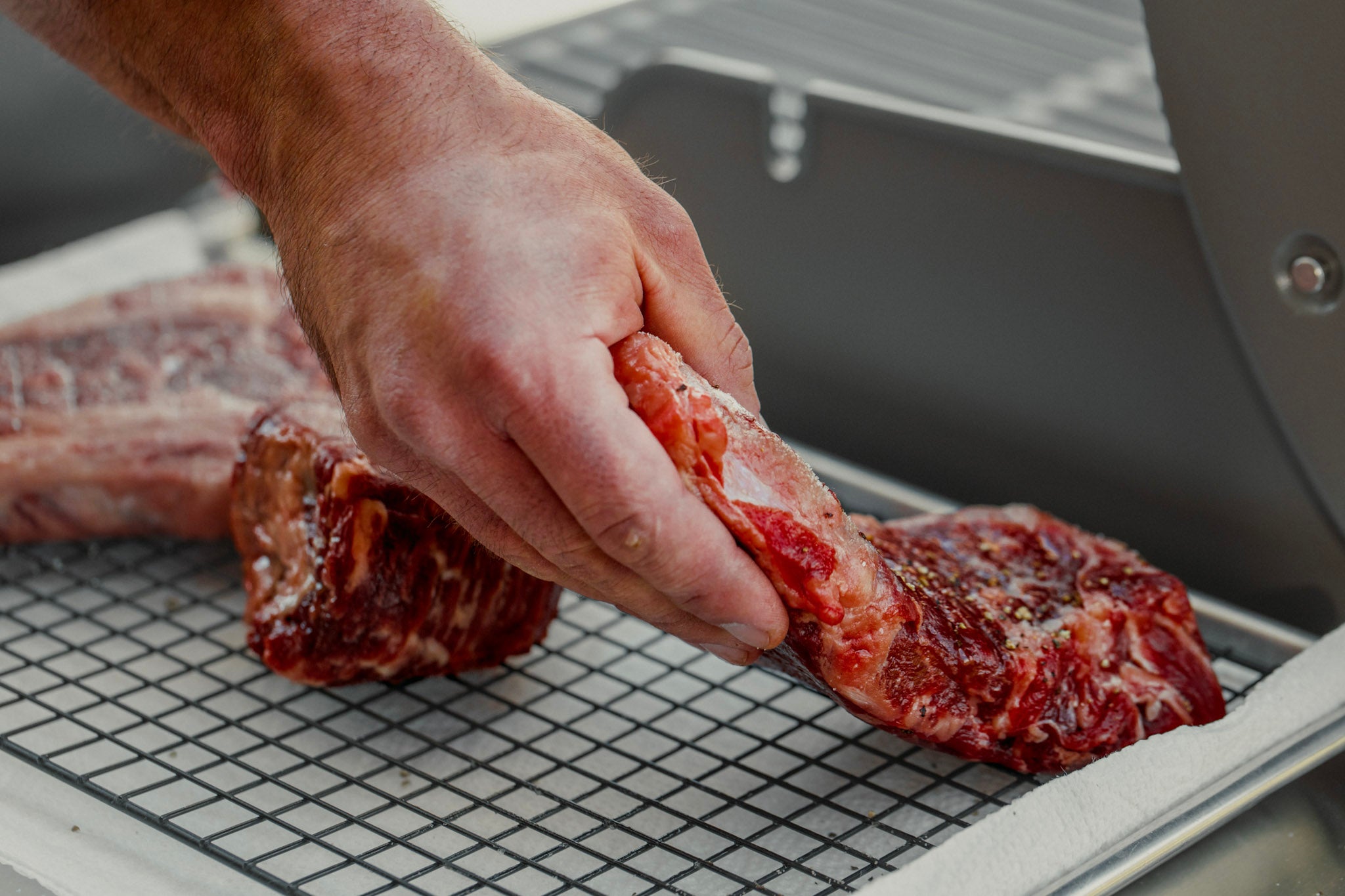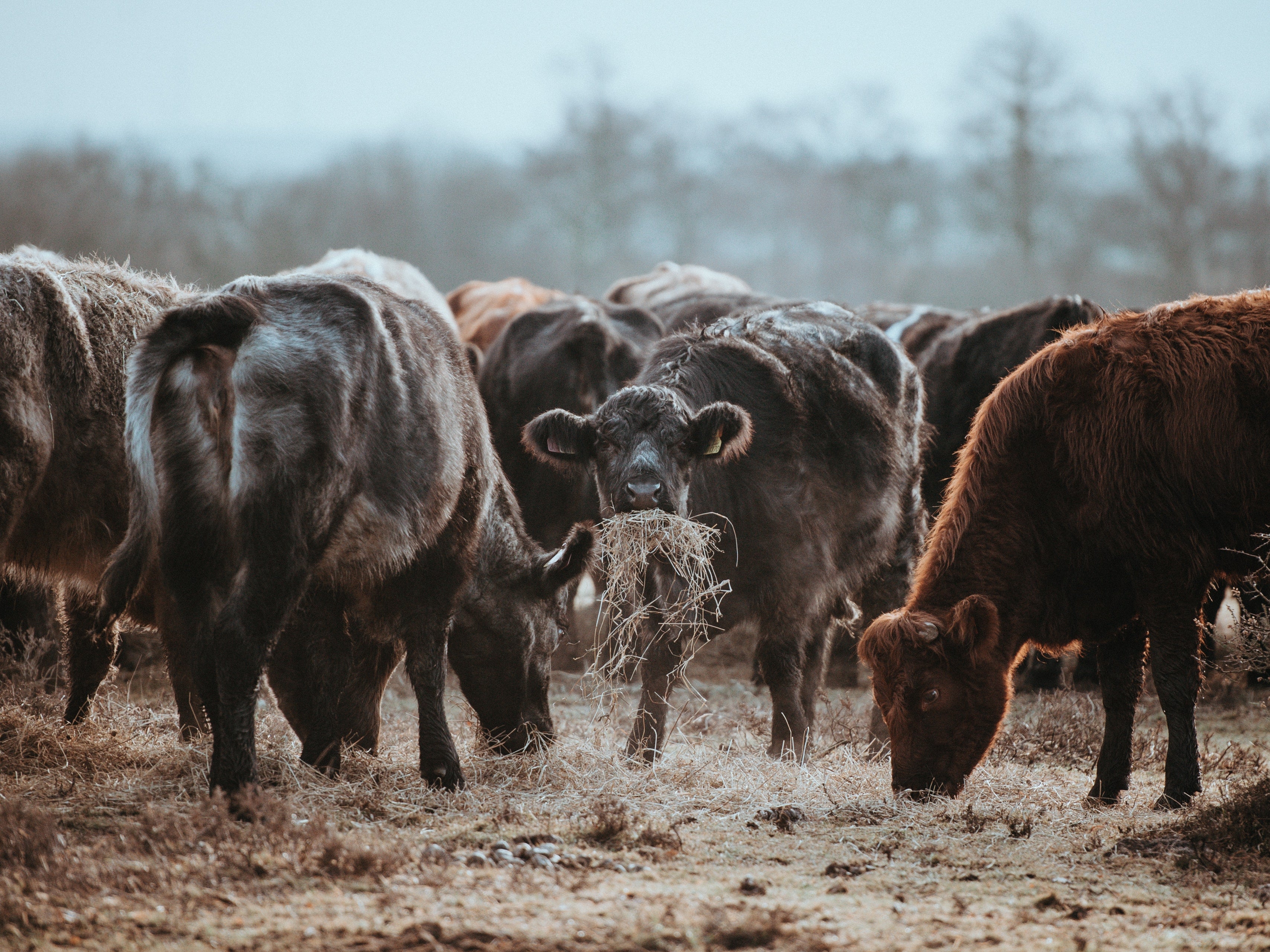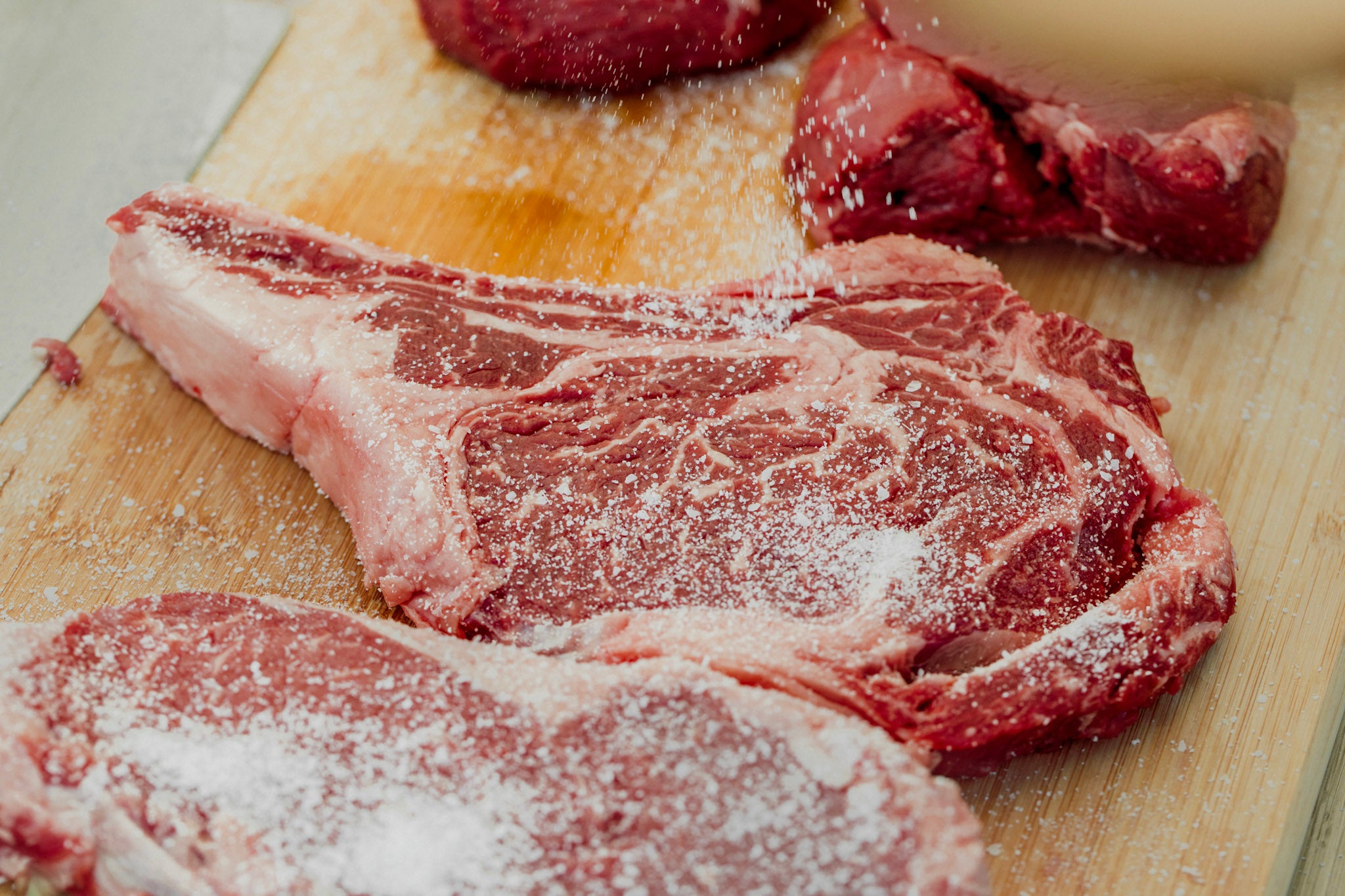
Cooking Dry-Aged Steak: Tips & Techniques for Tender, Flavorful Meat
Dry-aged steak. What is it? And how do you cook it?
Here at Lazy T Ranch, high-quality beef is our pride and joy. We care about every detail, from our cattle’s genetics and their quality of life to how they’re processed. Obviously, we get excited about dry-aged beef due to its unmatched taste, texture, and tenderness. Our goal is to empower you to not only explore different types of dry-aged beef but to cook it with confidence.
Until the past couple of years, dry-aged beef has been relatively inaccessible, sold only in fancy butcheries and steakhouses. Now you can purchase dry-aged steaks online and from high-end grocery stores and cook them in the comfort of your own home.
The word “dry-aged” might give you some apprehension, but don’t fear. We want to help you unlock the secrets to cooking tender, flavorful dry-aged steak. The fact of the matter is achieving maximum tenderness and flavor isn’t difficult. Dry-aged steaks do all the hard work for you.
What is dry-aged steak, and what makes it different from regular steak?
To answer this, we need to look at the dry-aging process. For weeks or months, cuts of beef (or the whole carcass) are stored within a temperature and humidity-controlled environment, often a refrigerated chamber of some sort. The air inside the dry-aging chamber is constantly circulated as the enzymes in the beef break down protein, fat, and glycogen.
Consistency is key when it comes to dry-aging beef. The dry-aging chamber is kept at a temperature of 32 to 36°F with a humidity of 85 to 90%. Not only does this keep the beef from drying out, but it prevents the beef from spoiling.
Most dry-aging chambers remain locked for the duration of the process to minimize disruptions to the fragile environment.
As mentioned above, during the dry-aging process, the beef’s enzymes break down protein, fat, and glycogen. This gives the beef its famed tenderness. Moisture is removed from the meat, which concentrates and enhances the rich, beefy flavor.
Compared to regular steaks, dry-aged steaks are tenderer and more flavorful. They’re like aged cheese or wine. They vary in flavor depending on the time spent aging.
Dry-aged steaks have less moisture than regular steaks, which is important to remember when cooking. During the dry-aging process, the beef can lose up to 30% of its weight in water. This means dry-aged steaks take about 30% less time to cook than regular steaks.
How do I choose a high-quality dry-aged steak?
First, pay attention to sourcing! The best dry-aged steaks come from high-quality, well-marbled beef. High-quality beef comes from producers who value their cattle’s well-being, prioritize all-natural feed, and go the extra mile to harvest the tenderest, marbled cuts.
Second, note how long the steak was dry-aged. The standard amount of dry-aging time is 15 days, but steaks that dry age for 21+ days have an even deeper flavor.
Third, choose your favorite cuts. Although dry-aged steaks are tenderer and tastier than regular steaks, each cut offers a different experience. If you like Ribeyes because of their rich marbling and juiciness, you’ll love a dry-aged Ribeye steak. Or maybe you like a leaner New York! A dry-aged New York steak will rock your world.
Basically, dry-aging enhances the steak-eating experience. It takes everything you love about your favorite cut and makes it better.
Why is it important to bring the steak to room temperature before cooking?
You may be tempted to run that dry-aged steak under hot water, but don’t rush the thawing process. Like all steaks, dry-aged steaks can be frozen, but they need to be thawed slowly to protect their quality. To do this, allow your dry-aged steak to thaw in the refrigerator for 2 to 3 days. Then, before cooking, allow your dry-aged steak to reach room temperature.
In a rush? Thaw your dry-aged steak in a bowl of cold water.
Bringing your dry-aged steak to room temperature ensures it’ll cook more evenly. If too cold, the juices within the steak won’t melt into the muscle. This can cause an unstable temperature reading which might leave the interior of the steak raw.
What are the best techniques for seasoning dry-aged steak?
Dry-aged steaks have an incredible flavor. They don’t need fussy seasonings and marinades. To prep your dry-aged steak, use salt, pepper, and olive oil.
Salt will draw moisture out of the dry-aged steak, which can make searing a challenge, so only season before you cook the meat. Some chefs believe if you salt a steak and let it rest for 45 minutes, the salty film will dissolve, and the water pulled to the steak’s surface will reabsorb, forcing the salt into the steak’s core. True or not? We’ll let you decide.
How can I achieve a perfect sear on the steak?
First, make sure the steak’s surface doesn’t have unwanted moisture. (You can avoid excessive moisture by thawing the dry-aged steak to room temperature and only salting it before cooking.) Once thawed and salted, sear the dry-aged steak on high heat. We recommend you do this for a minute or two on each side. Searing caramelizes the steak’s surface and traps juices within the cut. After searing, lower the heat to medium and cook the steak to your desired level of doneness. On average, it takes three minutes for rare, four to reach medium-rare, five for medium, and six for well-done.
Because dry-aged steaks have less moisture, they can easily be overcooked. Rule of thumb: It’s better to undercook a dry-aged steak. You can add cooking time, but you can’t un-cook a steak.
A meat thermometer can help determine when the steak is cooked to your desired level of doneness. Insert the thermometer from the side of the steak to its center.
We recommend you don’t cook a dry-aged steak beyond medium. Dry-aged steaks aren’t as “bloody” as regular steaks. A medium-rare dry-aged steak has a different consistency than a medium-rare fresh-cut steak.
Why is it necessary to let the steak rest after cooking, and for how long?
Most chefs recommend resting a dry-aged steak for either ten minutes or about the same amount of time that the steak was cooked. This allows the juices to redistribute through the cut instead of leaking onto the plate.
Resting is a controversial topic. Like with other cooking methods, it comes down to preference.
How do I properly slice a dry-aged steak for maximum tenderness?
For the tenderest and most flavorful bite of dry-aged steak, slice the meat against the grain.
Can I pair dry-aged steak with sauces or other accompaniments? If so, what are some recommendations?
The following herbs and fats make great additions to dry-aged steak: garlic, thyme, rosemary, bay leaves, butter, extra virgin olive oil, beef tallow, and bacon fat.
Are there any additional tips or considerations to ensure a successful cooking experience with dry-aged steak?
- When grilling dry-aged steaks, use a charcoal or gas grill. Preheat the grill to around 500°F and prepare the grill to have a section of direct heat and one of indirect heat. The dual zones of heat will allow you to sear on high heat and then allow the meat to finish cooking (to the desired level of doneness) over low heat.
- Turn your dry-aged steak frequently to ensure an even cook. Use tongs instead of a fork to avoid puncturing and leaking the steak’s juices.
- Some chefs recommend the Reverse Sear method to cook the steak evenly and achieve a crispy crust. To start, use either the Sous Vide or Oven Bake methods. The Sous Vide method involves placing the steak with salt and pepper, herbs, and fat into a sealed bag and then into a water bath with a circulator. The Oven Bake method involves placing the steak on a sheet pan fitted with a grid and putting it in a 300-degree oven for 20 to 40 minutes. From there, boil, grill, smoke, deep fry, or pan-sear your dry-aged steak to get a nice sear.
If you want to cook dry-aged steak but aren’t sure where to start, check out our specially curated dry-aged beef boxes! Here at Lazy T Ranch, we’ve learned the highest quality beef comes from tried-and-true methods of cattle management, 21-day dry-aging, and detailed butchery.


